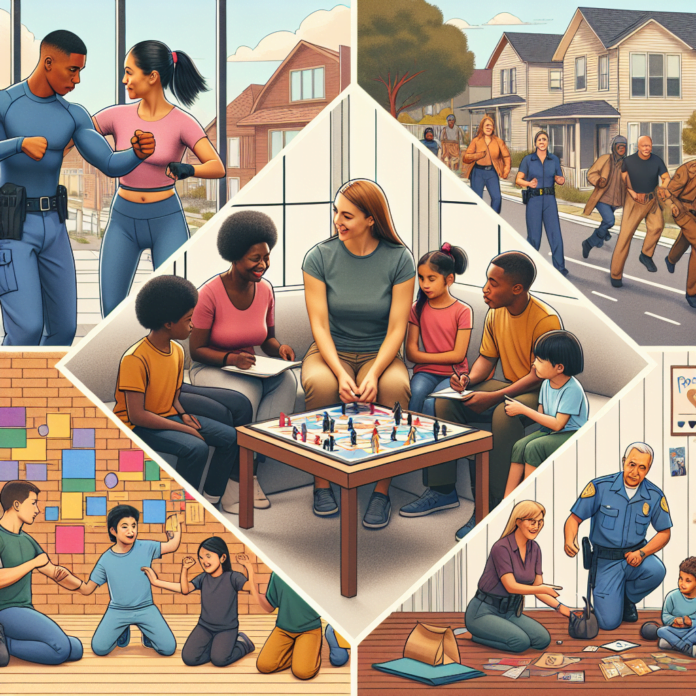In recent years, there has been a renewed emphasis on community-based methods in an effort to prevent crime. These are initiatives that harness the collective power and resources of local groups to deter criminal activity. This article discusses some of these vital community initiatives that are making an impactful contribution to crime prevention.
Community Watch Programs
Many townships activate neighborhood-focused crime reduction methods such as “Community Watch” programs, where residents are mobilized to serve as additional “watchful eyes.” These programs typically involve residents observing and reporting suspicious activities to law enforcement officers promptly, contributing to situational crime deterrence. The National Neighborhood Watch Program, for instance, has grown into one of the most effective grassroots community-led initiatives countrywide.
School-Based Programs
Schools serve as excellent avenues for implementing early intervention strategies to prevent youth from embarking on potentially destructive crime paths. These programs may range from mentorship schemes, counseling services, after-school activities, to anti-bullying campaigns. Certain initiatives, like the School Resource Officer (SRO) Program, place police officers in schools to forge stronger ties with students, maintain safety and become positive role models to the younger generation.
Community Policing
Community policing is another potent mechanism for crime prevention. This philosophy evolves the role of police from being mere law enforcers to acting as community partners. It fosters better understanding and trust between the police and the community, promises proactive problem-solving, addresses the root causes of crime, and eventually improves the quality of neighborhood life.
Restorative Justice Programs
Restorative Justice programs aim at repairing the harm caused by crime through an inclusive process that often involves both the victim and the offender. These programs focus on rehabilitation through reconciliation, providing opportunities for offenders to redeem themselves in society’s eyes, reducing recidivism rates, and offering a closure for victims. Examples include victim-offender mediation, family group conferencing, and circle sentencing.
Conclusion
Society’s continuous struggle against crime does not entirely depend on punitive measures; it also involves proactive, community-led initiatives focused on preventing crime from happening in the first place. These initiatives, whether it’s a neighborhood watch program, a school-based initiative, community policing or restorative justice practices, address the root causes of crime. They not only improve the quality of life in our neighborhoods but also foster strong community bonds, proving that together we can make our societies safer.
FAQs
1. How can I start a community watch program in my neighborhood?
Starting a community watch program involves organizing local residents, establishing clear objectives, and engaging with local law enforcement. It is recommended to approach the local police department for guidance and support.
2. What is the role of schools in crime prevention?
Schools play a pivotal role in crime prevention by implementing early intervention strategies. These strategies aim to deter youth from paths that could lead to criminal activity in the future. Examples include mentorship and counseling services, after-school activities, and anti-bullying campaigns.
3. How effective is community policing in preventing crime?
Community policing is noted for its effectiveness in crime prevention. As police officers partner with community members to proactively address the immediate conditions that give rise to public safety issues, it not only reduces crime rates but also enhances the quality of neighborhood life.
4. What are Restorative Justice Programs?
Restorative Justice programs aim at repairing the harm caused by crime. These programs work by promoting a reconciliation process that often involves both the victim and the offender, facilitates offender rehabilitation, and provides closure for victims.

